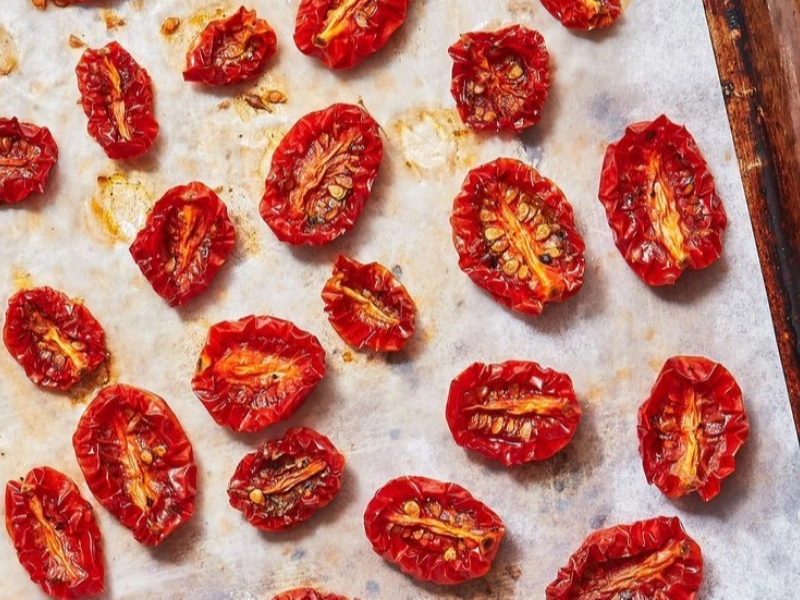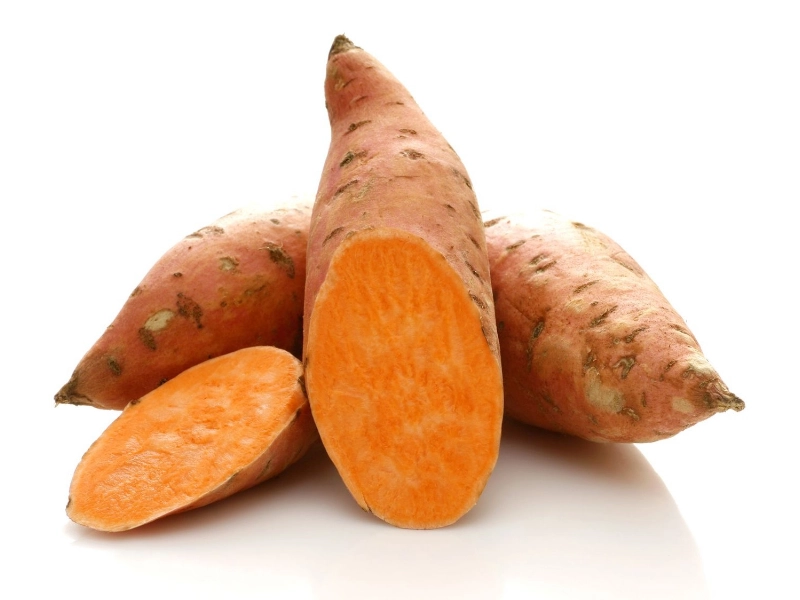Most people perceive tomatoes as vegetables, even though botanists classify them as fruit. In addition to being high in iron, they are also high in potassium, vitamin C, and lycopene. Iron is also abundant in leafy greens. For more than 2 mg of iron per cooked cup, add collards, Swiss chard, and kale to salads. Additionally, they complement meals high in vitamin C, which improves iron absorption.

 Sun-dried tomatoes are an excellent source of several elements, including iron. They also have a high potassium and lycopene content. At home, they can be baked or dehydrated in a dehydrator. Check out this Grow a Good Life guide if you don't know how to make them.
Dr. Kara claims that sun-dried tomatoes are rich in phytochemicals that boost immunity and function as antioxidants. Along with vitamins A, lutein, and zeaxanthin, one cup of these delectable delights offers 23 percent of the daily required consumption of vitamin C. They also contain potassium, which controls blood pressure, muscle and nerve function, and fluid balance.
Sun-dried tomatoes are an excellent source of several elements, including iron. They also have a high potassium and lycopene content. At home, they can be baked or dehydrated in a dehydrator. Check out this Grow a Good Life guide if you don't know how to make them.
Dr. Kara claims that sun-dried tomatoes are rich in phytochemicals that boost immunity and function as antioxidants. Along with vitamins A, lutein, and zeaxanthin, one cup of these delectable delights offers 23 percent of the daily required consumption of vitamin C. They also contain potassium, which controls blood pressure, muscle and nerve function, and fluid balance.
 Sweet potatoes are an excellent source of iron. A large, unpeeled potato weighing 299 grams contains 1.9 milligrams, or around 11% of the daily value, of iron. They also provide a considerable amount of fiber, potassium, and vitamin C.
For a healthy digestive system, regularity is encouraged, and constipation can be avoided with a high-fiber diet. Dietary fiber also helps the gut microbiota.
Beta-carotene, a plant pigment that our bodies convert to vitamin A, is abundant in orange sweet potatoes. This vitamin has anti-cancer properties, lowers inflammation, and improves eye health.
Sweet potatoes are an excellent source of iron. A large, unpeeled potato weighing 299 grams contains 1.9 milligrams, or around 11% of the daily value, of iron. They also provide a considerable amount of fiber, potassium, and vitamin C.
For a healthy digestive system, regularity is encouraged, and constipation can be avoided with a high-fiber diet. Dietary fiber also helps the gut microbiota.
Beta-carotene, a plant pigment that our bodies convert to vitamin A, is abundant in orange sweet potatoes. This vitamin has anti-cancer properties, lowers inflammation, and improves eye health.
 Brussels sprouts are a nutrient-dense vegetable with several health advantages. They are low in calories but high in fiber, protein, and important minerals like potassium.
Brussels sprouts, like other cruciferous vegetables, are rich in glucosinolates and sulforophane chemicals, which aid in the reduction of oxidative stress. These phytochemicals mitigate inflammation and shield cells from oxidative stress.
Vitamin C, which helps improve iron absorption, is present in Brussels sprouts. Additionally, they have folate, a B vitamin necessary for both healthy growth and pregnancy. Additionally, they are a good source of vitamin K, which helps to build bones and coagulate blood. You can bake, steam, or sauté these nutrient-dense vegetables.
Brussels sprouts are a nutrient-dense vegetable with several health advantages. They are low in calories but high in fiber, protein, and important minerals like potassium.
Brussels sprouts, like other cruciferous vegetables, are rich in glucosinolates and sulforophane chemicals, which aid in the reduction of oxidative stress. These phytochemicals mitigate inflammation and shield cells from oxidative stress.
Vitamin C, which helps improve iron absorption, is present in Brussels sprouts. Additionally, they have folate, a B vitamin necessary for both healthy growth and pregnancy. Additionally, they are a good source of vitamin K, which helps to build bones and coagulate blood. You can bake, steam, or sauté these nutrient-dense vegetables.
 The meaty, funnel-shaped, orange, yellow, or white chanterelles are wild mushrooms. Along with minerals like potassium, iron, and phosphorus, they are high in vitamins A and D.
Soluble fiber aids in digestion and is abundant in chanterelle mushrooms. They also have vitamin D, which helps maintain healthy bones, and a good source of vitamin A, which helps maintain skin health.
Before consumption, chanterelles should be cooked or boiled because their raw flavor is very strong. Foraging for these mushrooms is dangerous because they can mimic toxic lookalikes like the jack-o'-lantern mushroom (Omphalotus olearius) and false chanterelle (Hygrophoropsis aurantiaca). A dangerous species could disturb the digestive system, induce nausea, and cause excruciating cramping in the abdomen.
The meaty, funnel-shaped, orange, yellow, or white chanterelles are wild mushrooms. Along with minerals like potassium, iron, and phosphorus, they are high in vitamins A and D.
Soluble fiber aids in digestion and is abundant in chanterelle mushrooms. They also have vitamin D, which helps maintain healthy bones, and a good source of vitamin A, which helps maintain skin health.
Before consumption, chanterelles should be cooked or boiled because their raw flavor is very strong. Foraging for these mushrooms is dangerous because they can mimic toxic lookalikes like the jack-o'-lantern mushroom (Omphalotus olearius) and false chanterelle (Hygrophoropsis aurantiaca). A dangerous species could disturb the digestive system, induce nausea, and cause excruciating cramping in the abdomen.
 Garbanzo beans, sometimes called chickpeas, are a delicious snack and a flavorful addition to salads. They supply calcium and magnesium in addition to iron, both of which are critical for healthy bones.
According to nutritionist Patricia Bridget Lane, RDN, half a cup of cooked chickpeas contains 2.5 milligrams of iron. She suggests looking for foods in cans that are low in fat and sodium.
Aquafaba, or liquid from canned chickpeas, is a thickening, binding, and emulsifying agent. It can substitute for flavorless eggs in recipes. Non-heme iron absorption is improved by including meals high in vitamin C, such as tomatoes. For example, if you combine iron and tomato juice, you can get nearly six times as much iron from one serving of tomato juice.
Garbanzo beans, sometimes called chickpeas, are a delicious snack and a flavorful addition to salads. They supply calcium and magnesium in addition to iron, both of which are critical for healthy bones.
According to nutritionist Patricia Bridget Lane, RDN, half a cup of cooked chickpeas contains 2.5 milligrams of iron. She suggests looking for foods in cans that are low in fat and sodium.
Aquafaba, or liquid from canned chickpeas, is a thickening, binding, and emulsifying agent. It can substitute for flavorless eggs in recipes. Non-heme iron absorption is improved by including meals high in vitamin C, such as tomatoes. For example, if you combine iron and tomato juice, you can get nearly six times as much iron from one serving of tomato juice.